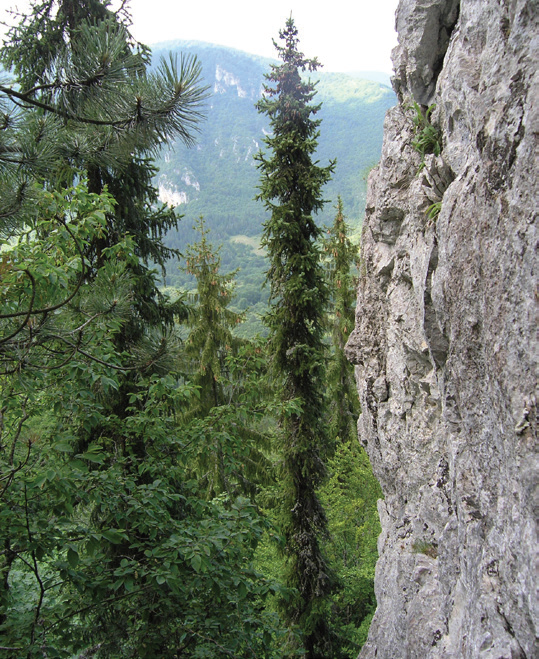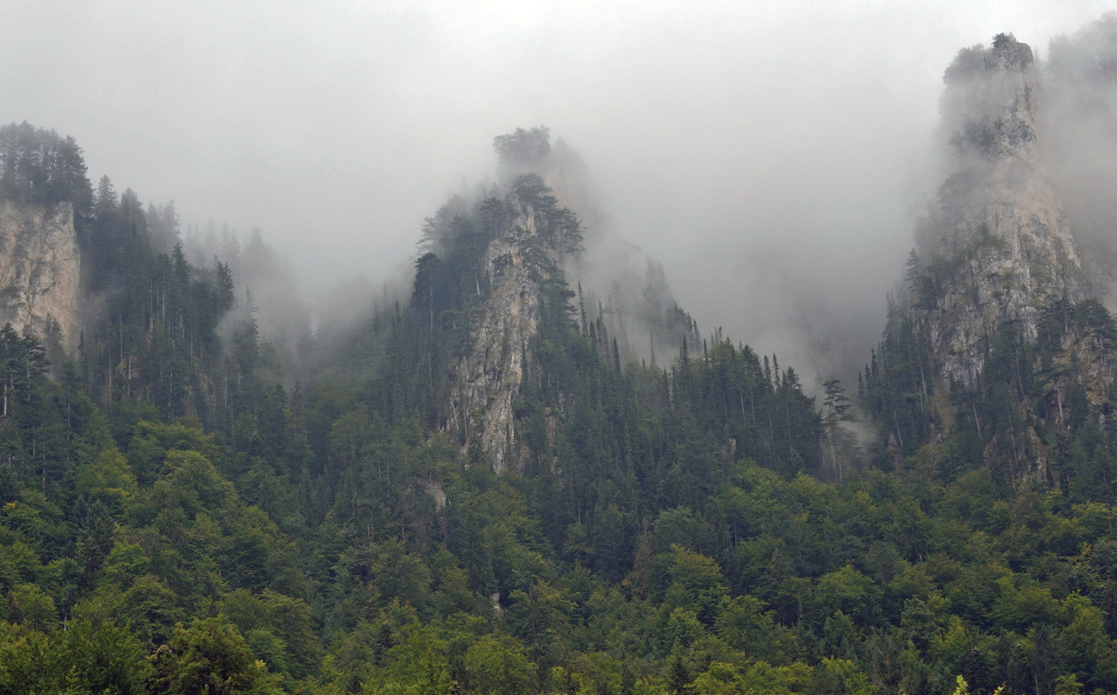Every species, including humans, is connected to and relies on each other to survive. Each year, on the 22nd of May, the International Day for Biological Diversity is organised to increase understanding and awareness of biodiversity issues. Maintaining and enhancing biodiversity and protecting ecosystems are also some of the core goals of the new BiH Environmental Strategy and Action Plan (BiH ESAP 2030+). We talked to the project experts in biodiversity, Ph.D. Senka Barudanović and Ph.D. Milan Mataruga, who explained why and how we could protect our precious nature in Bosnia and Herzegovina.
BiH is known for its beautiful landscapes and rich biodiversity. How would you describe the current status of biological diversity in BiH? And can you tell us about some of the characteristic flora and fauna species endemic to BiH?
According to available data (taking into account both the number and the total area) Bosnia and Herzegovina is among the countries with the greatest biodiversity in Europe. Most commonly, it is referred to the presence of over 5000 described taxon (taxon: units of species populations). This is a high number, showing the exceptional richness of flora and fauna in BiH. However, unfortunately, we are still unable to provide reliable and accurate data on the abundance of individual groups of organisms due to inadequate research and insight into the data published. It is expected that the development and implementation of the strategy “BiH ESAP 2030+” will enable space for allocation of funds for more detailed accounts of biodiversity in our country.
An endemic is an organism that is spread over a certain, mostly small geographical area. An estimated 30% of endemic flora in the Balkans can be found only in the territory of BiH. That is around 1800 species. Such diversity is a natural asset we have and manage. It is our responsibility to preserve it and protect it from extinction. It would not be fair to say that one or another species is more important than the others, because everything we may perceive as more or less important today, can change overnight. A species that is not interesting today can be very useful “tomorrow” (e.g., for medical purposes) or quite the opposite – invasive. That is why we need to preserve biodiversity – we can simply not know what might be very important tomorrow or in 10 or 100 years.
However, as an example of the specificity and significance of some rare species in our country today, we can mention:
- Pančić’s spruce (Picea omorika), evolutionarily among the oldest (more than 2 million years), and the last described woody plant species in Europe (Josif Pančić, 1875). The rare and endangered tree grows only in the canyon of the river Drina, and according to the latest research, climate change is additionally threatening this species.
- Croatian sibiraea (Sibiraea altaiensis ssp. Croatica), a shrub which grows in our country in Čabulja and Čvrsnica – at an altitude of about 1,200 metres and whose closest relatives are located 5,000 km to the east in Central Asia (Altaic and Tianshanic sibiraea).
- Sutjeska’s rockbell (Edraianthus sutjeskae), a protected and endangered plant only found on specific mountains. The professor Lakušić described it in the Sutjeska canyon on the rocks of Vratar. It can also be found on the mountains Volujak, Maglić and Zelengora.
- The olm (Proteus anguinus) is an endemic amphibian. It is a resident of underground rivers and lakes of the karst part of the Dinaric Alpes (Slovenia, Croatia, Bosnia and Herzegovina and Montenegro). It is expected that the construction of hydropower plants in this area can negatively affect the survival of this species.

What are the biggest threats to biodiversity in BiH? What social, economic, or political factors are driving those threats? How many protected areas does BiH have and are there any challenges in the management of these areas?
In addition to the development of the “BiH ESAP 2030+”, Bosnia and Herzegovina is currently implementing the project called “Supporting decision making and building capacity to support IPBES through national ecosystem assessments” where one of six chapters focuses on threats to nature in BiH. The project is implemented in agreement with the international organisation Intergovernmental Science-Policy Platform on Biodiversity and Ecosystem Services (IPBES). The results of this project will provide a much more specific and objective answer to this question. Also, our working group within the “BiH ESAP 2030+” project identified the following challenge areas (which can also qualify as pressures): legislative; institutional; lack of capacities; lack of knowledge on biodiversity; a small share of protected areas; lack of political will and links with academia; lack of public awareness; and financial support.
Compiled data provided by the line ministries in the Federation of BiH (FMET) and Republika Srpska (MSPCE) show that the share of protected areas in the Federation is roughly 4%, while the share in Republika Srpska is 2%. We are aware that the share of protected areas at the EU level is about 20%, and that the new EU Biodiversity Strategy for 2030 requires the EU member countries to increase this percentage to 30% within the next 10 years.
What do you think are some of the potential consequences of biodiversity loss – globally and in BiH?
Three main conditions must be met for the evolutionary process of species to occur: diversity (variety), selection (natural, and increasingly prominent anthropogenic selection), and heredity (DNA passed down by biological parents to their offspring). Therefore, the disappearance of biodiversity means the disappearance of one of the three crucial elements of the evolution or adaptability to changes, and thus eventually the extinction of life on Earth. We should also add that it is the responsibility of each country in the world to meet these conditions, in proportion to the abundance of the countries’ biodiversity.
What is Natura 2000? Why is it important and what is the current situation in BiH regarding the implementation of Natura 2000?
Natura 2000 is an ecological network that stretches across the EU. It is generated as a spatial result of the provisions of the EU Directive on Habitats and Directive on Birds. The ecological network seeks to protect rare and endangered European species and habitats so that all countries are required to contribute to the favourable state of these species and habitats in their country.
Natura 2000 is currently the largest ecological network worldwide. It accounts for 18% of the EU territory, with 27,312 designated areas. The network has been developed since 1992, and according to most recent assessments, the state of endangered habitats has improved since the time when the network was established.
The area covered by the Natura 2000 network does not necessarily need to be designated as a protected area (in other words, it does not need to be a national park, nature monument, nature park or protected landscape, etc.). However, every Natura 2000 area is managed based on a plan, which should secure a long-term favourable state for rare and endangered species.
Several small scale and large scale projects have been implemented in Bosnia and Herzegovina to develop a list of EU habitats and species widespread in our country. The most recent, and by far largest project in scale, resulted in a proposed plan on areas in Bosnia and Herzegovina which could be integrated in the European Natura 2000 network. The BiH Plan of Natura 2000 areas include some areas that are already protected, some of those envisaged as future protected areas, and some areas referred to in scientific literature as areas where the EU endangered species and habitats are widespread.

What support do you foresee in new BiH Environmental Strategy and Action Plan in maintaining and enhancing biodiversity and protecting our ecosystems?
Biodiversity and nature conservation are among the seven thematic areas within ESAP, which should cover the period until 2032. Thus, ESAP is the main framework for all the actions towards sustainable environmental management in the forthcoming period. One of the main goals of ESAP is the approximation of environmental management in Bosnia and Herzegovina to EU standards. The strategy should cover the upgrade of both legislative and institutional frameworks and capacity building on the one hand, and secure conditions for nature conservation to a degree appropriate to its values in Bosnia and Herzegovina on the other hand. This means increasing the size of protected areas. Alongside this, we need effective systems for collection of data on species, habitats and genetic biodiversity, as well as systems of continued monitoring. This indicates that it is necessary to improve cooperation between science and decision makers aimed to facilitate information sharing on the state of biodiversity. There is a need for adequate scientific research. Also, the nongovernmental sector must engage more, both in raising awareness among the general public and in professional biodiversity monitoring.
International Biodiversity Day 2021 is being celebrated under the slogan “We´re part of the solution”. What actions could citizens of BiH take to support biodiversity conservation?
We all make many decisions on a daily basis which affect the state of nature. These decisions involve the choice of food, potable water consumption, waste disposal patterns, and other consumer behaviour, etc. And at the same time we’re more or less aware of that we do need a healthy and functional nature. Within our daily routines, all of us can make a big difference: parents through the upbringing of their children, teachers through quality education, consumers through reducing levels of consumption, decision makers through responsible governance, etc.
Nonetheless, in our community, we can single out two sectors that can take concrete actions. These are the nongovernmental sector and the governments. All citizens can join the efforts of non-governmental organisations and advocate for and build responsible attitudes towards the natural assets of Bosnia and Herzegovina.
For the government sector, ESAP will provide it with an opportunity to systematically upgrade and develop the capacities that need to focus on nature conservation and protection of all regulatory benefits, tangible and intangible, which nature provides to the citizens of our country.
More about the BiH ESAP 2030+ environmental strategy
The primary goal of the BiH ESAP2030+ project is to support the authorities of BiH, FBiH, RS and BD in the ESAP 2030+ development. The ESAP document will comprise environmental strategies and action plans for FBiH, RS and BD, and actions that will be taken at the level of BiH. On a long-term basis, the project will improve the environment in BiH and support BiH on its path to EU membership.
The contents of the BiH ESAP will address the following EU seven areas of the Environmental Acquis: Water; Waste; Biodiversity and Nature Conservation; Air Quality, Climate Change and Energy, Chemical Safety and Noise; Sustainable Resource Management; and Environmental Management.
The BiH ESAP Project is implemented by Stockholm Environment Institute (SEI) with the financial support of the Embassy of Sweden in BiH.
More details about the BiH ESAP 2030+ Project available at www.esap.ba.
The interview was initially published on the Avaz.ba portal on May 22, 2021.







